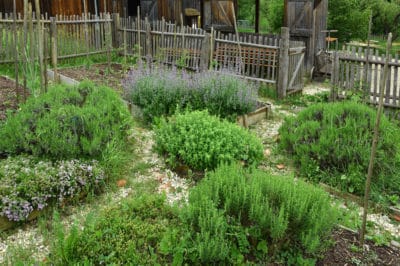Herbs with edible and decorative flowers
Especially among the biennial herbs, there are many species with decorative, yet tasty, flowers. For example, the pretty flowers of nasturtium are edible, and closed flower buds can be used as capers. Edible flowers include: dill, chervil, borage, clary sage, daisy, marigold, chamomile, and spice marigold.
Problematic parsley
Does your new parsley not really want to develop, even if it grew really well in the same spot last year? Parsley is incompatible with itself; that’s probably why it thrives so badly. You must change its location for each new sowing; otherwise, the plants will grow poorly due to its inhibitions. By the way, this kitchen classic has a long germination time, sometimes lasting several weeks. In outdoor culture, you can sow a few radishes as markers in between, so that the rows of seeds remain visible.
Basil belongs under a rain shelter
In regions with high precipitation, basil should be cultivated under plexiglass or glass roofs or as a permanent crop in a cold frame. This sensitive plant needs to receive sufficient light, but remain as dry as possible. If there is too much moisture, the basil threatens to wither.
Sage is the perfect rose companion
Kitchen sage, with its silver-grey foliage, is an effective companion for roses at the borders. Just make sure that the plants are not too densely packed together and that the sage gets especially emaciated soil in the planting hole. Its colourful varieties are also a wonderful match for the “queen of flowers.” White variegated leaves complement white roses perfectly, and yellow-patterned ones underline yellow roses’ tone.
Thyme grows almost everywhere
Thyme is characterised by a fascinating will to survive, even under the worst conditions. The plants are so undiscriminating that they can be found virtually everywhere: in niches, cracks, joints, between cobblestones, footplates, and even in staircase joints. Creeping thyme species, such as cascade thyme or sand thyme, are very suitable for under-planting tall stems. Green lemon thyme also thrives in shaded places.
Cold-tolerant rosemary varieties
Rosemary is generally not considered hardy and can survive at temperatures as low as minus-five degrees Celsius (-5°C).
Hint
Wormwood’s essential oils and other ingredients make it an effective pesticide that works wonderfully against not only aphids and mites, but also against various fungal diseases.
